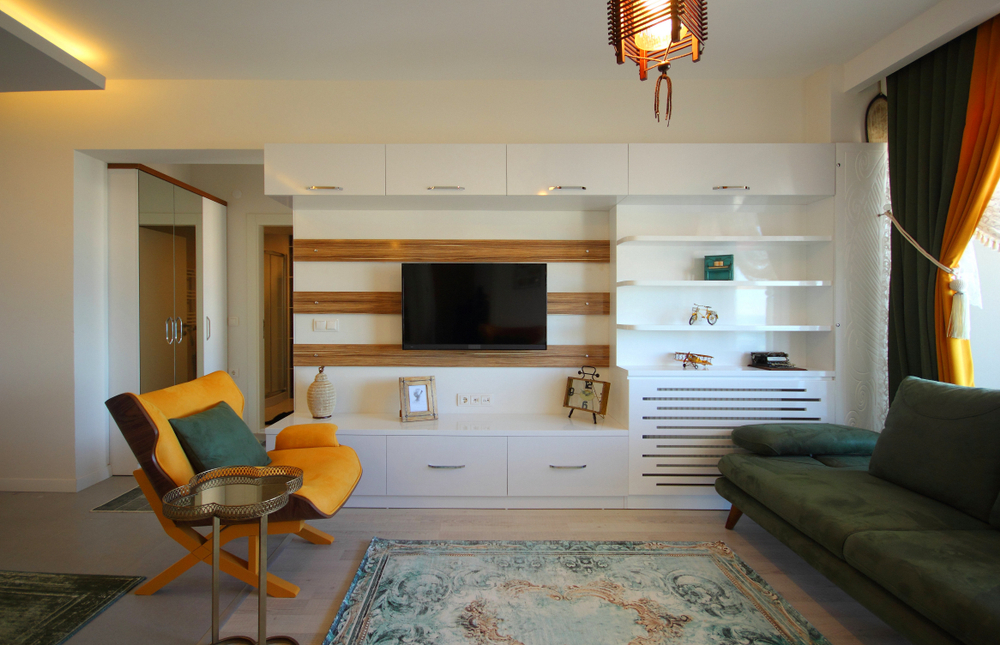If you intend to mismatch chairs, then it’s important to start with a clear idea in mind.

Otherwise, you risk creating a space that looks poorly managed. Properly done, mismatched dining room chairs add interest while remaining cohesive.
There are a few different ways to match chairs. First, you need to consider how many chairs you want overall, and how many will fit around the table.
Then, decide the level of matching you want. The most popular option is having two different sets: one for the head chairs, and one for the sides. This is interesting without too much variation. Finally, consider the table and the room itself.
Once these basic decisions have been made, you can begin picking chairs. Look for features or materials that suit each other, and will work in the room. Start by choosing the head chairs, as these are generally more distinctive. The other seats can then be chosen in a complementary style.
How do you mix and match dining tables and chairs?
Mix and matching the dining chairs and tables is a way to add personality to a room, and create a custom space for your family. To mix and match dining chairs and tables, you need to consider the features you want to emphasize, and where you can allow for variety.
There are a few key aspects to the dining room set that make the design. The materials, textures, finish, and colors can all be contrasted or matched.
By choosing a key area to focus on, you avoid clashing designs. These key components link the set together.
For example, chairs with similar rounded backs can be different materials, or mix textures in similar shades for a rustic charm. Find one feature you love, and look to carry it across the room.
Don’t be afraid to go bold. In fact, this will often look better. By picking chairs with obvious design differences the intention becomes clear. Chairs with only slight differences can just seem like mistakes.
There are a few key elements that can’t be forgotten, and these relate to function rather than design. The chairs need to be the right size and height for the table. Chairs that are too low or high will be uncomfortable to use and difficult to sit on.
Don’t forget how they’ll fit around the table. Consider how the chair legs are placed, as these can add surprising width.
Is it okay to mix and match dining room chairs?
It is okay to mix and match dining room chairs, and can create a really custom space. Done correctly, mixing and matching dining room chairs can improve an otherwise bland room that lacks personality. There are many reasons to try this approach.
One reason you may choose to do this is because you’re looking to save money. Buying set chairs and tables limits you to an exact price, as there are no single areas for budgeting. However, by mixing and matching you can choose chairs or tables that are of different price ranges.
Anther reason for doing so is that you may have an item of furniture you like, but isn’t part of a set. If you have a chair or table you particularly like, but they aren’t in a set, it can be stressful to find the right furniture for a close match. Instead, you can mix designs up and refresh the room.
Finally, mixing and matching can change the use of a room. For large families, or people who enjoy having guests over, mixing furniture can maximize space.
Rather than having to struggle with too large chairs, smaller seating can still look good and make better use of a table. Bench seating is also good for this, and rarely comes in a set.
Don’t forget, this is your space. Mixing and matching chairs doesn’t have to be a bold statement. Carefully selected chairs won’t stand out as mismatched,
Should chair legs match table?
Chair legs and table legs don’t have to match to create a cohesive dining room. Deliberately mismatched legs add character and personality. Avoid anything too highly contrasted, and focus on particular features.
If you choose to have mismatched legs, there are a few things to consider when making a purchase. Primarily, what other areas of the furniture will create a cohesive space?
There are several features across the dining room table and chairs. If you choose to have these all mismatched, you’ll likely find your room has become overwhelming.
Instead, you need to create a space that is thematic and visually appealing. The legs are a particular risk for seeming jumbled, as they’re pushed into direct contrast.
Look for features of the legs to match within the areas that are mismatched. For example, if the table has thin legs made of wood, you could match with chair legs or similar proportions made of metal.
Or the legs could be completely different, but the shade of wood is reflected in the chair backs. This gives an overall appearance of harmony, without seeming too homogenous.
If you do intend to mismatch the table and chair legs, you also need to consider the function. It doesn’t matter if they look good if they won’t all fit under the table. Check for the height and width.
What color should dining room chairs be?
There is no specific colors for dining room chairs to be, but neutral toned or wooden is traditional. There is, however, plenty of room for variety.
If you’re interested in painting your chairs, you may want to consider bold colors. Almost any color will work for a dining room chair, because of their smaller size. A chair painted in a bright shade can add a pop of color to a room without being too strong.
Before painting, consider what the primary use of the room is. If you normally use the dining room for breakfasts, a light and airy color will fit the morning sunshine. If you enjoy regular family meals, try natural and relaxed shades such as blue.
However, if you regularly host dinner parties, you may prefer a richer tone. Dark woods, muted shades, and luxurious upholstery can all work.
Mixing and matching chairs is another way to add color to a dining room. Especially if you only want a subtle hint. Try painting the two head chairs, and leaving the other ones neutral. This can balance out the room and add some personality.
The best color for a dining room chair is a neutral shade. Wood is traditional, but don’t be afraid to experiment. Different tones of a single color can be used across the dining set for a bold twist. Or only paint two chairs, and leave the rest natural.






